Hello Fellow Hiveans
Recently I celebrated my first Hive birthday as well as leveling up to a Minnow within days of each other. It was a pretty awesome coincidence, much of which is owed with gratitude to you all who read these posts I put together, a massive Thank You!
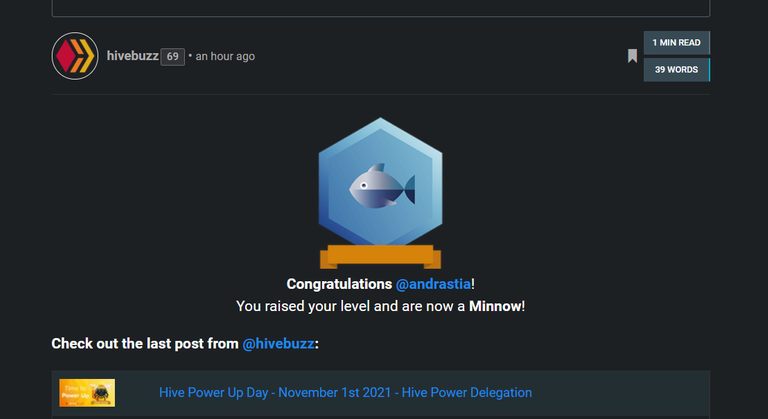
With the history I have in conservation and having worked at an estuary, I figured it would be a good opportunity to share some of that. It was something that I really liked about working in conservation - every day was different and you never knew what to expect. Each of us had to be extremely flexible and adaptable, willing and able to down tools on a particular task immediately if called to an emergency or crisis. Prioritization had to be razor sharp and there were times when I had to make tough calls between two things that were equally important in the grander scheme of things.
It repeatedly tested and honed so many of my skills: reaction timing, logical thought patterns, strategizing, executing, logistics, alert levels - and I find myself using those skills to this day while prioritizing and executing what needs to take place to get stuff done. This morning I found myself smiling wryly when I put into perspective all the things I'm currently juggling, I probably wouldn't be doing it quite as well if I hadn't had as much crisis management experience as I had in conservation. Unfortunately due to the nature of that work, it is almost always reactive, no matter how well you plan ahead. Sewerage spills into rivers, algae blooms, fish die off events, flooding, wild fires, snake captures - you can't diarize these because they just happen and you have to be ready to think on your feet, organize logistics fast and get going. Having said that, there were things that also needed to take place regularly and one of them was our quarterly "fish trek" - which is essentially a monitoring protocol where we would go out on a boat, put out nets in various areas of the estuary, wait a specified amount of time (normally 45 mins to 1 hour), then pull in the nets and identify, count and measure our catch. This would then be considered a representative sample of that particular management zone. I've been involved in a lot of fish treks and a lot of other fish management activities as well including a culling event where we used a piscicide It was interesting work and I enjoyed getting the vast field experience that I did, I will always be grateful for that. The particular estuary that I worked at had a good selection of fish considering it is now a pretty built up urban area with very little natural networking or connectivity. As a result, there are a lot of pressures on this altered environment which push the need for human intervention in terms of management actions up tremendously. Somehow, this water body is still holding on and is home to at least 24 indigenous fish species, some of which rely on the estuary as a breeding zone. Fish treks consisted of long days in the sun, quite a lot of physical graft and a huge amount of measuring, counting and writing. Unfortunately the majority of fish that are removed, especially the smaller ones don't survive this but are returned to the water to be gobbled up by birds, crabs, other fish and sometimes even otters or water mongoose. You never really know what might come out of the woodwork. The larger invasive fish species are not returned to the water and the edible ones become fish cakes for lunch of staff members the following day. Essentially nothing goes to waste from these monitoring events. It was exciting when we came across species that hadn't been found for a few years like these Gobies in the center compartment below - these are essentially salt water fish and can often be found in rock pools along the shore of the ocean. I would rope in our international volunteers to help out with these fish trek events so they also got the experience and were able to see the different types of fish. While it's not really a big five experience like the volunteers would get working at the Kruger National Park, it was still valuable scientific data that was being collected and would later be used for drawing up management plans and protocols, for funding proposals to mitigate damaging construction upstream, lobbying for higher protection status of the estuary etc., I always tried to drive home that even the less exciting activities were still extremely valuable for the future of the conservation area. We occasionally came across a fish that had been tagged by one of the fishermen - Leervis (also known as Garrick) are one of the champion fish of this estuary and can grow up to over a metre long. The majority of sport fishermen in the area belong to clubs and get involved in tagging programs which are also used in monitoring. So even though I hope to one day in the distant future become a big fish, for now, I'm super grateful to be a minnow and to have had an opportunity to look back on the awesome experience I got working with these fishies while in the conservation sector. I have some wonderful memories of those days and they always makes me smile. I feel kinda proud that I was able to make a small contribution to the conservation efforts towards protecting these estuarine habitats and species for future generations to enjoy whether by recreational fishing or by munching them. Images are my own unless stated otherwise
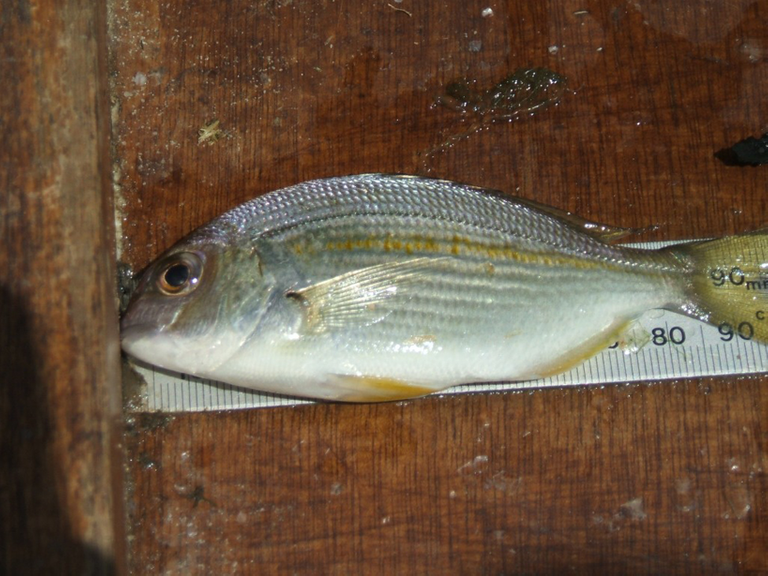
Juvenile Cape Stumpnose - one of the cooler indigenous fish that use the estuary as a safety zone before heading out into the deep ocean
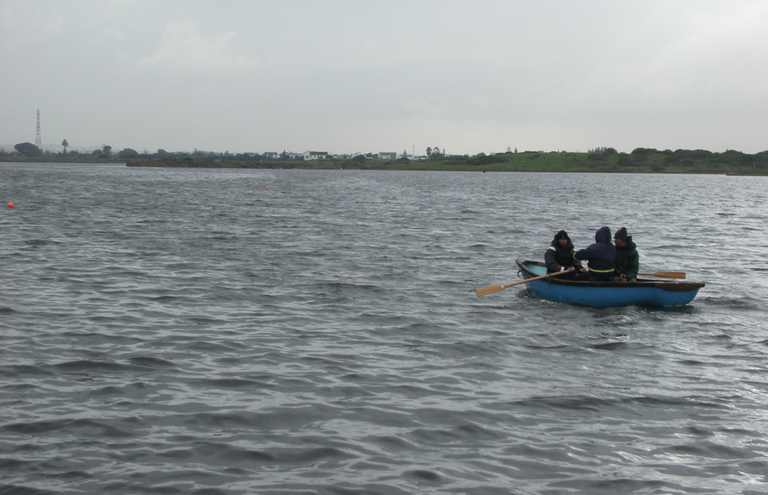
Taking out the nets
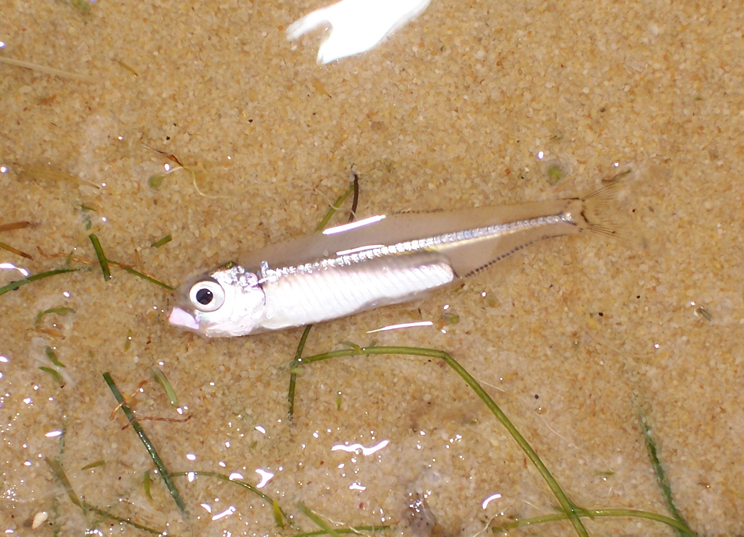
Even the tiny fishies were identified, counted, measured and recorded as part of the species monitoring at the estuary.
(a chemical used to eradicate invasive fish species from a water body) so that we could re-introduce indigenous fish species that would be better suited to that particular environment.
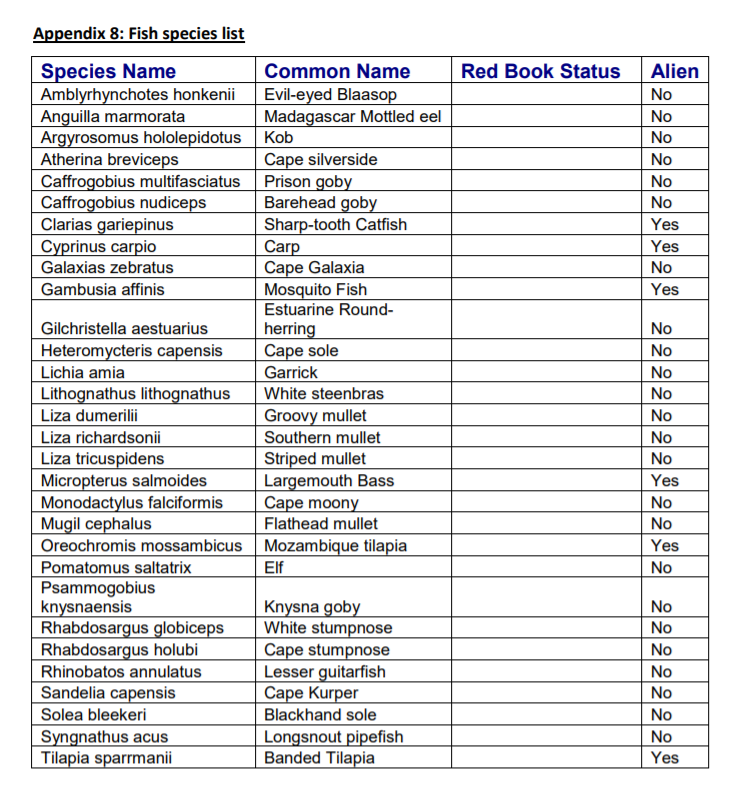
Fish species list. Source
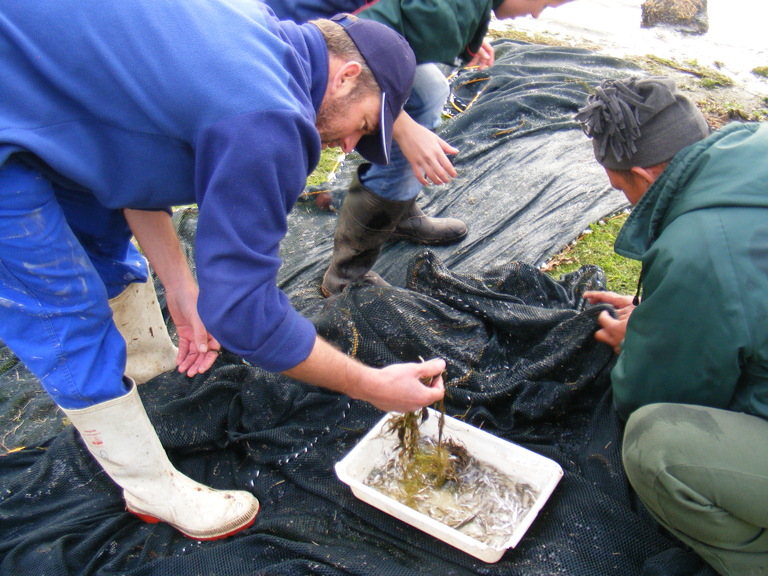
Each section of the net is checked for fish, even the tiny ones are collected.
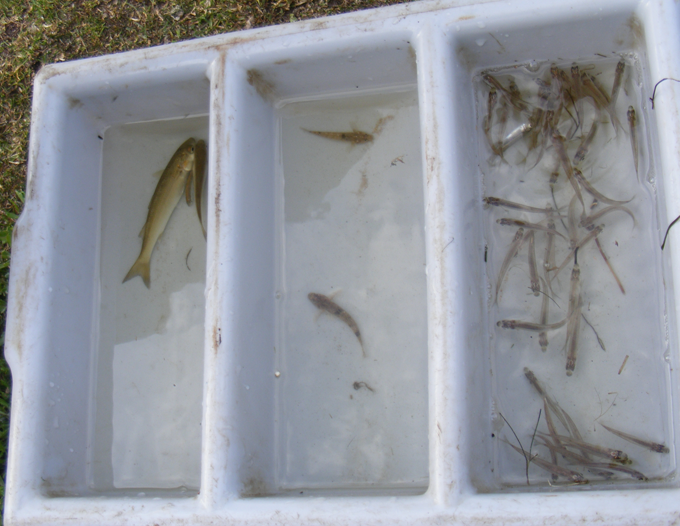
Sorting out the various species of fish to be counted, measured and then documented.
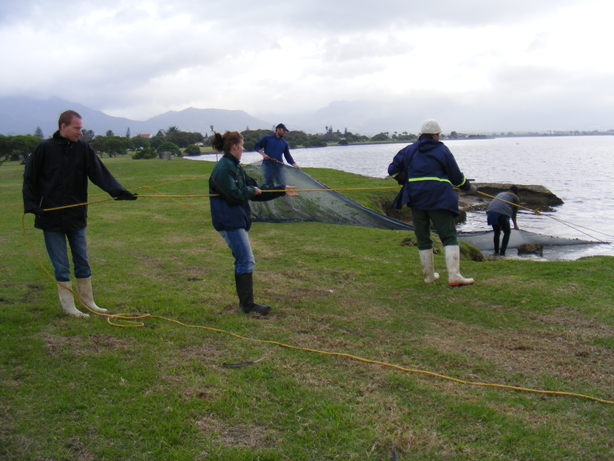
International volunteers assisting with pulling in the nets
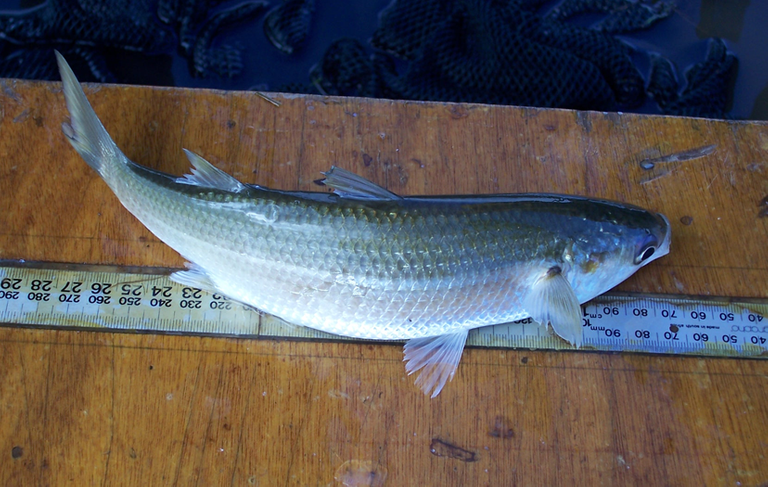
Mullet - one of the indigenous fish that are often caught using handlines - they are delicious but need to be handled with care as their fins slice and dice human skin better than a sushi knife.
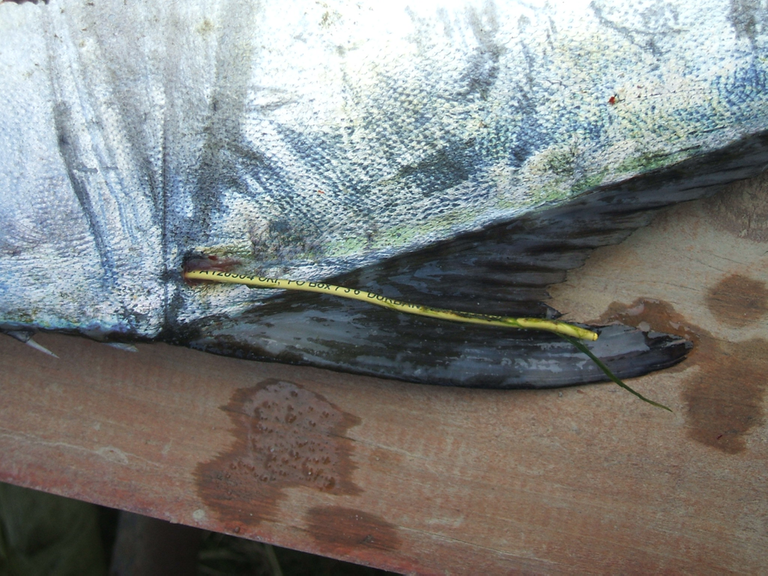
The monitoring tag on one of the Leervis that was recovered in one of the fish treks.


What a teeny stumpnose! This was a fascinating read @andrastia! I have rather fishy memories of my childhood growing up on the Natal South Coast. Sardine run hits and everyone is on the beach. The best and only thing I enjoyed about it was that we got to miss out on school for a few hours!
Hi Buckaroo
How are you doing? Did you have any storm damage with the crazy thunder storms?
Lol yes that stumpy was so cute, I like them when they are babies, their shape is so cute. Oh I can just imagine with the sardine run, it was always a massive thing in Natal and kinda a highlight of the year. It's always a good thing to be able to get some time off school to spend outside :)
Hope you are well.
Have a lovely weekend.
Nope. Passed us by. But the floods in George looked bad
This is cool, good work that you do (or did?)! It’s funny I never knew what an estuary was until this year when we stumbled on one when we were out for a journey earlier in the year! They are a fantastic place for sure!
I know what you mean with some fish being sharp, we’ve had our fair share of getting sliced up by some of the fish we catch lol takes a little bit but you eventually figure out how to hold them without getting sliced up.
Glad you keep track of these fish and the invasive ones. We have a place we go often that’s for invasive snails that came in so we’ve been taking them out and killing them whenever we can. They don’t have any natural predators so I think they destroy parts of the ecosystem, though I’m not specifically sure what.
Happy blockchain birthday and congrats on hitting minnow! That's awesome! I remember when I got to that point, it's an awesome and fun journey for sure! Glad you're on here with us!
Hey @cmplxty
Thanks for the message. Yes, estuaries are quite fascinating places and tend to have higher biodiversity due to the mixing of fresh and salt water habitats.
Gosh I do think I have had enough hands on experience with fish to last a lifetime now lol., yet when I go to Knysna over the holidays I know I'm going to end up fishing with my cousin and uncle hahaha. It should be fun though, Lory will love it. Just hope that I don't get sliced again, maybe I'll just handle the little fishies.
Do you know which species the invasive snails are? They are the worst, they breed so fast and they can carry so many diseases! In Africa, so many of the really nasty diseases are carried by snails as intermediate hosts. Invasive snails in Hawaii have caused massive amounts of damage and almost caused a handful of extinctions. It's insane really.
Thanks for the birthday wishes, it was a good day and I am really loving Hive, I've met wonderful people, shared so many laughs and learned a lot, so I am grateful. Also nice to see the Hive price rallying today :)
Hae a lovely weekend.
What an impressive write up. I guess I never really thought about people in your profession. Thanks for doing what you do.
Happy blockchain birthday, it's my pleasure to keep an eye on you. Cool stats bro.
Hey @dandays
Thanks for that lovely message. It was an amazing profession and I'm really grateful I got all the experience that I did. I'm not in it anymore, but I still like to share it with people to raise awareness. To be honest fish treks were kinda smelly events, not my favourite field work option but had to be done!
Thanks for the Hive Birthday wishes too, I did a little happy dance when I got the badge and levelled up :)
Hope you guys are keeping well.
Have a stunning day!
Lots of mombakkies out and about today, keep an eye on your pension pipe.